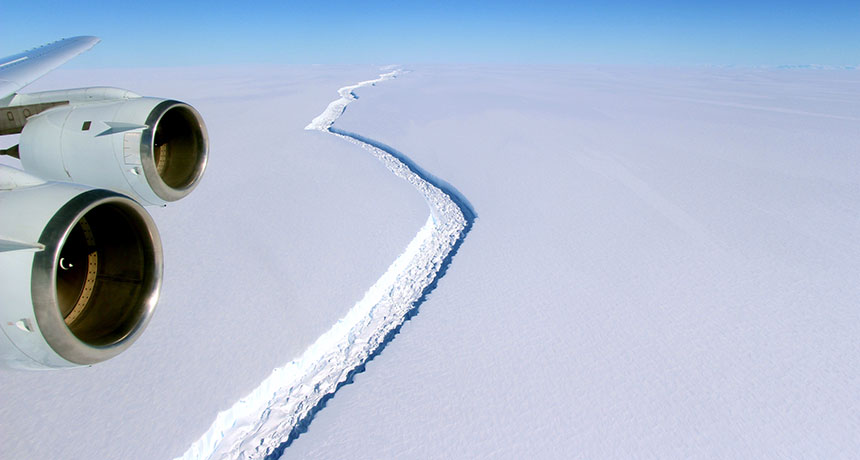Massive ice shelf is poised to break off of Antarctica
Huge crack threatens to release an ice shelf as big as Delaware

A 100-meter-wide, kilometers-long rift in Antarctica’s Larsen C ice shelf could soon break off a 5,000-square-kilometer chunk of ice into the ocean, scientists warn.
John Sonntag/NASA







